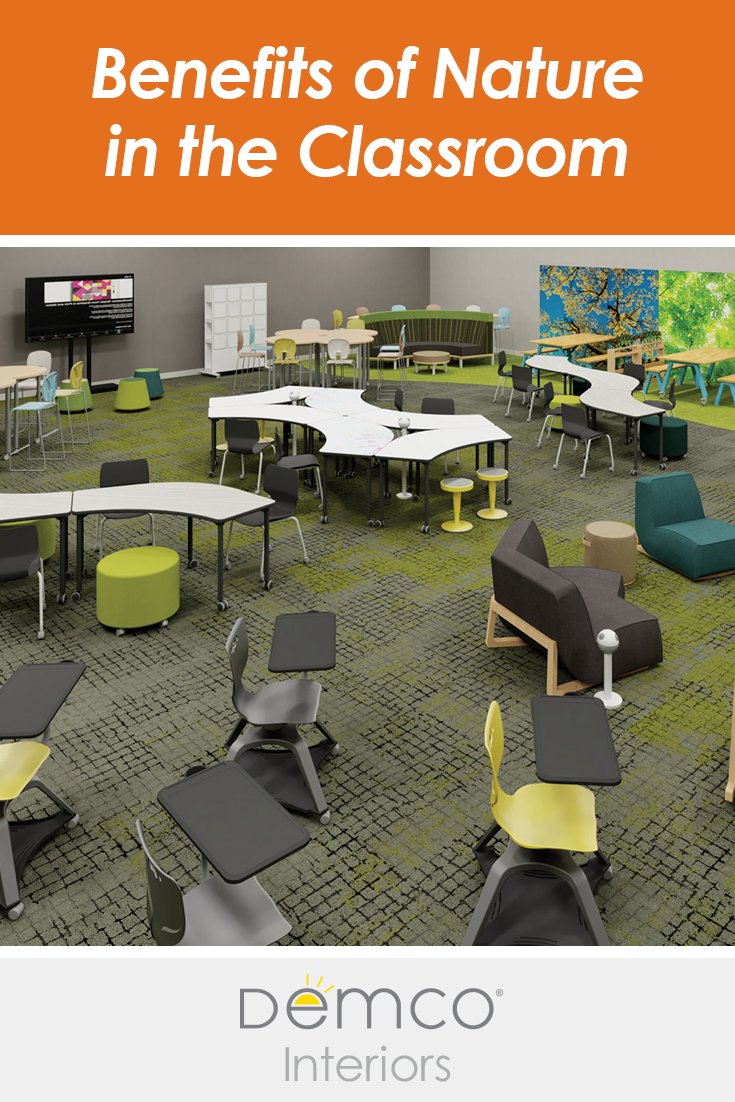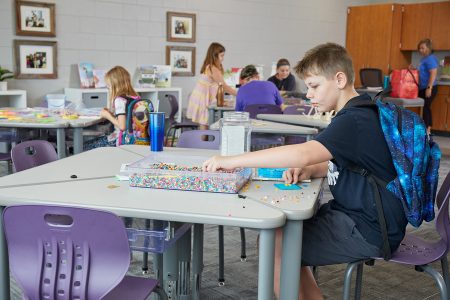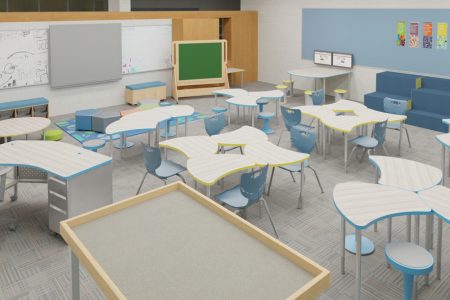 The notion that spending time in nature positively impacts physical and mental health isn’t a new one. Studies dating back to the mid 1990s demonstrated a strong linkage between natural daylight and higher test scores. A study from 2015 found a beneficial association between exposure to green space and cognitive development among elementary-aged children. The science connecting overall well-being and exposure to nature is well founded, and as human beings, the need to connect to nature is something we have always intrinsically felt.
The notion that spending time in nature positively impacts physical and mental health isn’t a new one. Studies dating back to the mid 1990s demonstrated a strong linkage between natural daylight and higher test scores. A study from 2015 found a beneficial association between exposure to green space and cognitive development among elementary-aged children. The science connecting overall well-being and exposure to nature is well founded, and as human beings, the need to connect to nature is something we have always intrinsically felt.
Building on that existing knowledge base is the emerging science around biophilic design, which suggests that incorporating characteristics of nature into the physical learning environment can have similarly positive impacts on students’ well-being.
What Is Biophilic Design?
First popularized in the 1980s by American biologist and Harvard professor Edward O. Wilson, the term biophilia means the innate attraction humans feel toward nature. An evolution of that concept, biophilic design is the deliberate practice of incorporating elements of the natural world into the built environment to positively impact human well-being.
According to Terrapin Bright Green, a leading sustainability consulting firm, patterns of biophilic design fall into three categories:
Nature in the Space
Nature in the Space refers to incorporating real physical elements of nature into our interior spaces. Examples of this concept include a window with a tree-filled view, indoor water fixtures, and the use of light to mimic natural conditions.
Natural Analogues
This category refers to incorporating literal and implied representations of nature into a physical space. Using textile patterns, furniture, or surfaces that simulate elements of the natural environment is common in biophilic-inspired designs.
Nature of the Space
Nature of the Space refers to how we relate to the design of a physical space and how the various elements of that space relate to one another. Design elements like sight lines, the relative size of furniture and other fixtures, and the flow of the space overall fall into this category.
Benefits of Biophilic Design in Schools
Today’s students spend less time outdoors than any generation prior, and many of those indoor hours are spent in classrooms and other school spaces. Administrators and educators have an opportunity to bridge the gap between students and nature and improve their overall health by incorporating biophilic design elements into their learning spaces.
Exposure to nature has a direct impact on children’s well-being. A study by Nancy Wells and Gary Evans in 2003 demonstrated that the impact of life stress was lower among children with high levels of nearby nature than among those with little nearby nature.
Another study, conducted around the same time, found that students who have access to a pleasant view of nature achieve better learning outcomes. The study demonstrated that access to sunlight and nature, along with other physical attributes of classrooms, are a significant predictor of student performance.
The evidence supporting biophilic design is clear. Now how do we weave its principles into our schools?
How to Incorporate Biophilic Design Into Your School’s Learning Spaces
While biophilic design is intended to be completely immersive by replicating the same experience that actually being in nature would create, there are ways to introduce biophilic elements into your classrooms and other learning spaces — and to gain the benefits nature provides — without completely overhauling your school.
Natural Materials and Textures
- Especially in areas of school where natural settings aren’t visible, bring the outdoors inside by replicating natural patterns, textures, and colors in the surface treatments used on walls, floors, and furniture. Our model 2019 EDspaces classroom is one example of this. The multisensory classroom includes tactile tables, soft seating elements, nature-inspired color palettes and shapes, and living walls.
- Look for places to incorporate planters, plant installations, or mobile gardens.
Organic Forms
- Select furniture that defies traditional geometric shapes like squares and triangles, and opt for more natural, curved organic forms instead, such as freshcoast Beach Stone seating, and tables in organic shapes.
Natural Light
- Make the best use of natural daylight by placing tables and seating close to windows.
- Consider relocating any storage currently positioned near windows, to maximize how students can use those daylight-rich spaces.
- Open blinds whenever possible and remove any window-mounted artwork, signage, or other items that block daylight.
Color
- Bring the colors and images of nature into your classroom through wall hangings or decor with natural patterns or textures.
- Use calming natural tones on rugs and window coverings.
- Use color to evoke emotion. For example, blues bring in the hues of water and sky and have been shown to produce a calming effect, yellow brings to mind sunshine and elicits feelings of joy and happiness, and greens bring in the calming effects of plant life.
Places of Refuge
- Consider incorporating pieces of furniture that offer students the opportunity to separate themselves from the surrounding people, noise, and distractions. This can be done with the use of noise-reducing wall dividers or nooks and pods.
- If new furniture is not feasible, configure some pieces of furniture you already have in your classroom or school library in a way that creates a place of refuge for students.
Artificial Substitutes
While access to natural daylight and views of nature are among the most impactful elements of biophilic design on student performance, those elements simply aren’t attainable in all school spaces. There are clever ways to replicate them though.
- If your school space is lacking windows, install LED lights that adjust their color over the course of the day to mimic the sun.
- Use wall panels and graphics that feature trees, leaves, forests, or other natural elements to bring the outdoors inside.
Biophilic-inspired design presents an opportunity for schools to first and foremost support and enhance student outcomes and performance, but the benefits don’t end there. Schools that embrace biophilia are positioning themselves as standout leaders — trailblazers who are committed to immersing their students in environments and experiences that captivate and inspire.
Stephen Gower
Stephen leads Demco’s Design Services team. He is an experienced furniture, product and interior designer with a background in designing educational products and impactful educational interiors. Stephen has 20 years of design experience, including 5 years of international experience at Demco Interiors UK in England.
Stephen holds a Bachelor of Arts, with honors, in Furniture Design from Brunel University in High Wycombe, England. His awards include the 2017 EDspaces Classroom Design Winner, awarded for “unique spaces designed by leading architects and designers in the field and outfitted with the latest innovations that make learning spaces come to life.”
Latest posts by Stephen Gower (see all)
- Library Design Tips for Social Distancing - May 28, 2020
- How Biophilic Learning Environments Boost Student Achievement - October 14, 2019
- Checklist: Designing Engaging Library Spaces for Children - October 19, 2018
- Top 5 Learning Environment Design Trends - September 21, 2018
- 5 Tips for Planning Early Literacy Library Spaces - August 1, 2018




